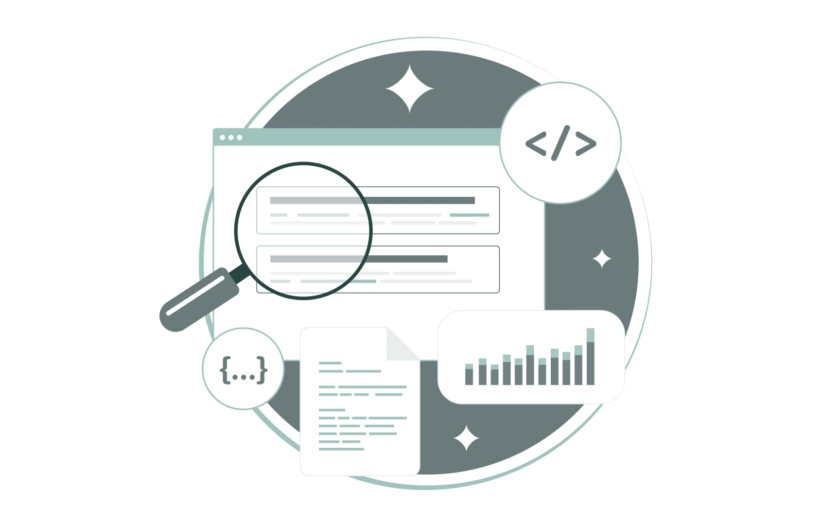Analyze.
Theorize.
Optimize.
Measure.
1. Analyze
Begin by analyzing your current page titles and meta descriptions as well as those of your competitors.
Use tools like Screaming Frog (or your crawler) to crawl your site and gather your page titles and meta descriptions.
Crawl your site: Identify all page titles and meta descriptions. Look for duplicates, missing tags, or tags that are too long or too short.
Review competitors: Study the page titles and meta descriptions of sites that rank for your target search terms. Pay attention to structure, tone and keyword use.
Search variants: Check how results change for keyword variants and search intents.
Identify rich snippets: Are competitors using structured data to enhance their snippets? Consider if rich snippets could be a viable option for you.
2. Theorize
Based on your analysis, develop hypotheses about improving your page titles and meta descriptions. The SCAMPER method can be a powerful tool here:
Substitute (S): Can you swap out words or phrases for something more engaging?
Combine (C): Can you merge different ideas or formats to create something unique?
Adapt (A): Can you tailor successful strategies from competitors to suit your content?
Modify (M): Can you tweak the tone, length or structure to make it more compelling?
Put to another use (P): Can you use an existing tagline or branding element as part of your title?
Eliminate (E): Can you remove unnecessary words to make it more concise?
Reverse (R): Can you flip the structure to create a fresh perspective?
Your goal here is to stand out. Is everybody saying the same thing?
If so, look for ways to stand out. Mention USPs and elements of your value proposition.
As an example elements like free delivery or 0% finance can help you stand out and grab the attention of searchers. This can help give context to your visits. This can help users identify key differences and boost engagement and conversions.
3. Optimize
Once you’ve developed your hypotheses, implement your changes.
Focus on primary keywords: Ensure your titles and descriptions include relevant keywords. Don’t overdo it, but you want to ensure that users can latch onto your listing as they skim the results.
Prioritize clarity: Make what your page offers immediately apparent. You don’t feel like you need to use every character. Less is more!
Highlight value: Use action-oriented language to entice users (e.g., “Learn,” “Discover,” “Save”).
Stay within limits: Keep page titles under 60 characters. Keep meta descriptions under 160 characters. Deliver your message clearly.
Don’t get hung up on perfection. Your goal is to start testing your ideas and then let data guide you.
4. Measure
After implementing changes, track performance metrics to gauge success:
Keywords: Monitor rankings and impressions for target keywords.
CTR: Compare click-through rates before and after optimization.
Traffic: Look for any positive or negative traffic impact.
Conversions: Evaluate changes in organic conversion rates and total conversions.
Google Search Console (GSC) is full of easy SEO wins, metrics and insights. GSC should be your go-to for accurate diagnostic information on your rankings, impressions and click-through rates.
Google Analytics and your favorite SEO tool can give you more insights and SEO metrics to measure and refine your approach.
Custom vs. crafted snippets
Google will often rewrite your meta descriptions and, to a lesser degree, page titles. Some studies suggest this can happen up to 70% of the time.
A simple test here is to stop this happening (or at least limit it) by using the data-nosnippet tag.
Simply wrap any text elements used to generate snippets. This can help force your chosen description snippet to be shown instead.
Again, this is another simple experiment you can conduct to get some data and measure the results.
ATOMic SEO
SEO is a moving target. Algorithm updates are often introduced. Changes in SERP layouts, rankings, and click-through rates are inevitable.
The only way to survive and thrive in SEO is to abandon fast hacks and ideologies.
Embrace a methodology rooted in experimentation and refinement.
The ATOM approach is a simple yet powerful framework for optimizing page titles and meta descriptions.
By analyzing, theorizing, optimizing and measuring, you can continuously improve your visibility, click-through rates and organic traffic.
Contributing authors are invited to create content for Search Engine Land and are chosen for their expertise and contribution to the search community. Our contributors work under the oversight of the editorial staff and contributions are checked for quality and relevance to our readers. The opinions they express are their own.
